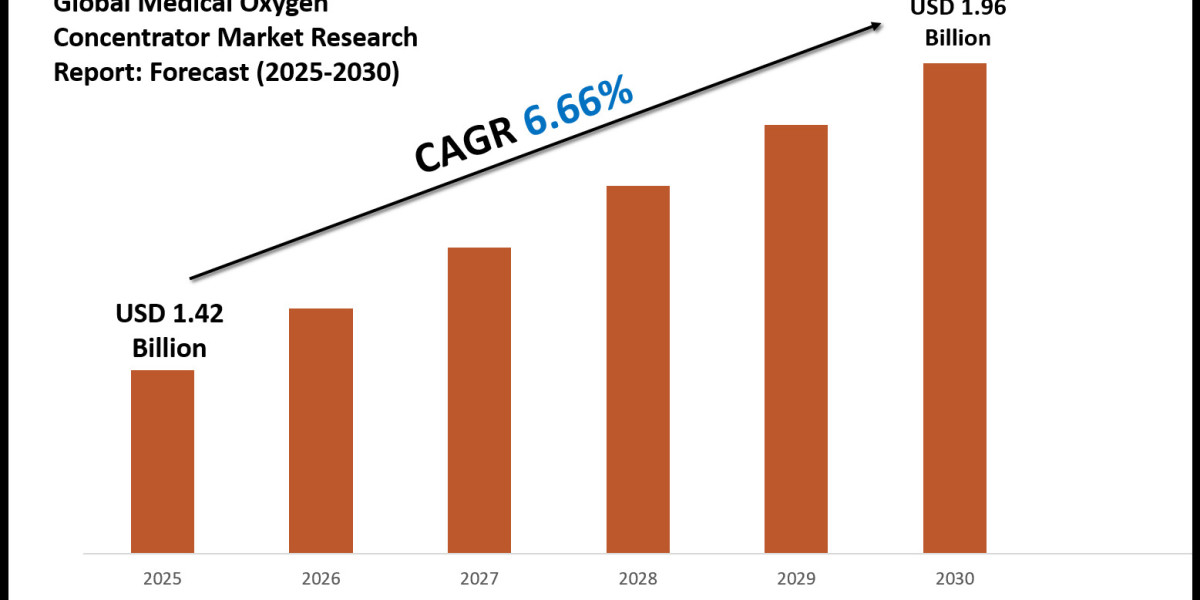"What’s Fueling Executive Summary Spondylosis Treatment Market Size and Share Growth
CAGR Value
The spondylosis treatment market is estimated to gain market growth in the upcoming forecasted years. Data Bridge Market Research analyses the market is growing at a healthy CAGR of 5.70% in the above-mentioned research forecast period. The increasing incidence of orthopaedic disorders will drive the market.
To formulate an all-inclusive Spondylosis Treatment Market report, detailed market analysis has been performed with the inputs from industry experts. In this era of globalization, the whole world is the market place and hence businesses seek to adopt a global market research report. This market research report is very crucial in several ways for business growth and to thrive in the market. This market research report assist businesses with the intelligent decision-making and better management of the market of goods, which ultimately leads to growth in the business. A wide ranging Spondylosis Treatment Market document helps to identify trends in consumer and supply chain dynamics and accordingly interpret Market, promotional and sales strategies for business growth and an utmost success.
The large scale Spondylosis Treatment Market analysis report has been prepared with the thorough market analysis carried out by a team of industry experts, dynamic analysts, skilful forecasters and well-informed researchers. The market report comprises of a number of market dynamics and estimations of the growth rate and the market value based on market dynamics and growth inducing factors. The global market report includes all the company profiles of the major players and brands. Not to mention, a credible Spondylosis Treatment Market business report is amazingly characterized with the application of several charts, graphs and tables depending on the extent of data and information involved.
Navigate the evolving landscape of the Spondylosis Treatment Market with our full analysis. Get your report:
https://www.databridgemarketresearch.com/reports/global-spondylosis-treatment-market
Spondylosis Treatment Market Outlook & Forecast
Segments
- By Treatment Type: Nonsteroidal Anti-Inflammatory Drugs (NSAIDs), Muscle Relaxants, Narcotic Analgesics, Antidepressants, Anticonvulsants, Corticosteroids, Physical Therapy, Surgery
- By Diagnosis: Imaging Tests (X-Ray, MRI, CT Scan), Physical Examination
- By End-User: Hospitals, Specialty Clinics, Ambulatory Surgical Centers, Others
The global spondylosis treatment market is segmented based on treatment type, diagnosis, and end-user. In terms of treatment type, spondylosis treatment includes options such as Nonsteroidal Anti-Inflammatory Drugs (NSAIDs), Muscle Relaxants, Narcotic Analgesics, Antidepressants, Anticonvulsants, Corticosteroids, Physical Therapy, and Surgery. Diagnosis methods in this market typically involve the use of imaging tests like X-ray, MRI, and CT scan, along with physical examinations. The end-users of spondylosis treatment services are hospitals, specialty clinics, ambulatory surgical centers, and others. These segments help understand the market dynamics and cater to the diverse needs of patients seeking treatment for spondylosis.
Market Players
- Pfizer Inc.
- GlaxoSmithKline plc
- AstraZeneca
- Teva Pharmaceutical Industries Ltd.
- Novartis AG
- Eli Lilly and Company
- Johnson & Johnson Services, Inc.
- Merck & Co. Inc.
- Sanofi
- AbbVie Inc.
The prominent market players in the global spondylosis treatment market include Pfizer Inc., GlaxoSmithKline plc, AstraZeneca, Teva Pharmaceutical Industries Ltd., Novartis AG, Eli Lilly and Company, Johnson & Johnson Services, Inc., Merck & Co. Inc., Sanofi, and AbbVie Inc. These companies play a vital role in driving innovation, research, and development within the spondylosis treatment market. Their strategic initiatives, product launches, collaborations, and acquisitions contribute significantly to the growth and expansion of the market globally. By focusing on providing effective and targeted treatment solutions, these market players aim to enhance patient outcomes and improve the overall quality of care in spondylosis treatment.
The global spondylosis treatment market is experiencing notable growth due to factors like the increasing prevalence of spondylosis, advancements in diagnostic techniques, and the availability of various treatment options. Spondylosis, a condition characterized by the degeneration of the spine, is a common musculoskeletal disorder, particularly in the aging population. The rise in sedentary lifestyles and the high prevalence of obesity are also contributing to the growing burden of spondylosis worldwide. As a result, the demand for effective treatment options, including medication, physical therapy, and surgical interventions, is on the rise.
In terms of treatment types, NSAIDs and muscle relaxants are commonly prescribed for managing pain and inflammation associated with spondylosis. Narcotic analgesics may be recommended for severe pain, while antidepressants and anticonvulsants can help manage neuropathic pain related to spondylosis. Corticosteroids are often used to reduce inflammation, and physical therapy is essential for improving flexibility and strengthening muscles. In cases where conservative treatments fail, surgery may be considered to address structural issues in the spine. The availability of a range of treatment options allows healthcare providers to tailor interventions based on the severity and symptoms of spondylosis in individual patients.
Diagnosis plays a crucial role in the effective management of spondylosis. Imaging tests such as X-rays, MRI, and CT scans help healthcare providers visualize the spinal structures and identify any abnormalities or degenerative changes. Physical examinations are also essential for evaluating range of motion, reflexes, and overall musculoskeletal health. Accurate diagnosis enables healthcare providers to develop personalized treatment plans that address the specific needs of patients, leading to better outcomes and improved quality of life.
In terms of end-users, hospitals, specialty clinics, and ambulatory surgical centers play a vital role in providing comprehensive spondylosis treatment services. Hospitals are equipped with advanced diagnostic and treatment facilities, making them ideal for managing complex cases of spondylosis. Specialty clinics, on the other hand, may offer focused care and rehabilitation services for spondylosis patients. Ambulatory surgical centers provide convenient outpatient surgical procedures, reducing the burden on hospital resources and offering cost-effective treatment options for spondylosis patients.
Overall, the spondylosis treatment market is witnessing significant developments driven by key market players' efforts to innovate and introduce novel treatment solutions. Collaboration among pharmaceutical companies, research institutions, and healthcare providers is essential for advancing spondylosis treatment options and improving patient care outcomes. As the global burden of spondylosis continues to rise, addressing unmet medical needs and providing comprehensive, patient-centered care will be crucial for driving further growth and innovation in the spondylosis treatment market.The global spondylosis treatment market is a dynamic landscape characterized by the increasing prevalence of spondylosis, technological advancements in diagnostic tools, and a diverse range of treatment options available to patients. Spondylosis, a degenerative condition affecting the spine, is becoming more common, particularly among the elderly population and individuals with sedentary lifestyles or obesity. This rising disease burden has led to a growing demand for effective treatment strategies to manage spondylosis symptoms and improve patients' quality of life.
Market players in the spondylosis treatment sector are pivotal in driving innovation and research to address the evolving needs of patients. Companies such as Pfizer Inc., GlaxoSmithKline plc, and Novartis AG are actively involved in developing new treatment modalities, enhancing existing therapies, and expanding their presence in the global market through strategic collaborations and product launches. These market players contribute significantly to advancing spondylosis treatment by focusing on personalized solutions, efficient drug delivery mechanisms, and improved patient outcomes.
In terms of treatment options, the spondylosis market offers a variety of interventions ranging from nonsteroidal anti-inflammatory drugs (NSAIDs) and muscle relaxants to surgical procedures. Each treatment type addresses different aspects of spondylosis management, such as pain relief, inflammation reduction, nerve pain modulation, and structural stabilization. Healthcare providers leverage this diverse treatment arsenal to tailor individualized care plans based on patients' unique symptoms and severity of the condition, ultimately leading to better treatment outcomes and enhanced patient satisfaction.
Diagnosis holds a crucial role in effective spondylosis management as it enables healthcare professionals to accurately assess the extent of spinal degeneration, identify specific abnormalities, and formulate targeted treatment strategies. Utilization of imaging tests like X-rays, MRI, and CT scans, coupled with thorough physical examinations, allows for a comprehensive understanding of the patient's condition, facilitating personalized care plans and optimal treatment outcomes. Accurate diagnosis not only improves clinical decision-making but also enhances patient compliance and overall treatment efficacy.
Furthermore, the segmentation of the spondylosis treatment market based on end-users highlights the crucial role played by hospitals, specialty clinics, and ambulatory surgical centers in delivering comprehensive care to spondylosis patients. Hospitals with advanced infrastructure cater to complex cases requiring intensive interventions, while specialty clinics and ambulatory centers offer specialized care and outpatient surgical services, promoting accessibility and cost-effectiveness in treatment delivery. The collaborative efforts of these diverse end-users contribute to a holistic approach in managing spondylosis, ensuring that patients receive coordinated care across different healthcare settings.
Overall, the global spondylosis treatment market continues to evolve with an emphasis on innovation, personalized care, and enhanced patient outcomes driven by the concerted efforts of market players, healthcare providers, and technological advancements. Collaboration among industry stakeholders, combined with a patient-centered approach, will be instrumental in addressing the unmet needs of spondylosis patients and driving further growth and advancements in the treatment landscape.
Inspect the market share figures by company
https://www.databridgemarketresearch.com/reports/global-spondylosis-treatment-market/companies
Spondylosis Treatment Market Research Questions: Country, Growth, and Competitor Insights
- What is the current assessment of the Spondylosis Treatment Market size?
- What growth trajectory is predicted over the forecast span?
- What are the detailed groupings within the Spondylosis Treatment Market segments?
- Who are the big names currently dominating this Spondylosis Treatment Market industry?
- What’s new in the product portfolios of key companies?
- Which country-level trends are analyzed?
- What region is emerging as a new hotspot for Spondylosis Treatment Market growth?
- What nation is poised to drive future Spondylosis Treatment Market value?
- Which region currently dominates by volume or revenue?
- Where is the sharpest CAGR being observed?
Browse More Reports:
Global Healthcare Navigation Platform Market
About Data Bridge Market Research:
An absolute way to forecast what the future holds is to comprehend the trend today!
Data Bridge Market Research set forth itself as an unconventional and neoteric market research and consulting firm with an unparalleled level of resilience and integrated approaches. We are determined to unearth the best market opportunities and foster efficient information for your business to thrive in the market. Data Bridge endeavors to provide appropriate solutions to the complex business challenges and initiates an effortless decision-making process. Data Bridge is an aftermath of sheer wisdom and experience which was formulated and framed in the year 2015 in Pune.
Contact Us:
Data Bridge Market Research
US: +1 614 591 3140
UK: +44 845 154 9652
APAC : +653 1251 975
Email:- corporatesales@databridgemarketresearch.com
"






